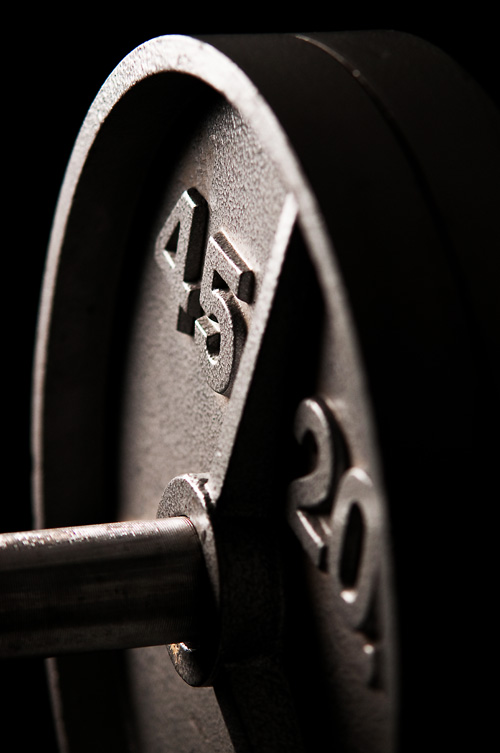Squat like a pro and grow!
The squat—it’s not glamorous, and unless your a special kind of crazy it isn’t too much fun either. However, you wont get very far on your way to looking good naked without it.
While many may claim a particular gizmo or gadget to be a one-step solution for total fitness and conditioning, none can compare to the time-tested completeness of a heavy squat. The unassuming nature of this simple movement belies a long list of benefits as well as a few complex challenges.
Squatting in a particular fashion can build total body muscle mass, increase endurance, raise metabolism, generate power, and develop athleticism. It is the gold standard of exercises for scores of athletes and physique enthusiasts for a reason. But with these great benefits also comes risk of dysfunction and injury, as many wealthy orthopedic surgeons will attest. Only when squatting is done with care and proper technique can its incredible benefits be realized with minimal risk.
Just as an athlete needs to understand his/her sport’s fundamentals in order to succeed, the novice squatter must work diligently before he/she even approaches the squat rack. In order to piece together the puzzle of a truly epic squat, three things must come together in unison:
- Flexibility and Mobility
- Technique
- Supplementation & Recovery
The Importance of Flexibility and Mobility
First, the differences between flexibility and mobility must be understood.
Flexibility measures how far someone can passively move in a particular range of motion. The depth someone can reach with a particular stretch indicates his/her flexibility. Mobility, on the other hand, measures the total active range of motion that can be achieved. How far forward the knee reaches when stretching one’s calve indicates the flexibility of this muscle whereas how many different directions the knee can point with the foot glued to the floor indicates the mobility of the ankle. Both of these subtly different qualities must be cultivated in order to squat safely and effectively.
In the flexibility category one must take care to stretch the pecs, hip flexors, calves, and pirformis. As far as mobility is concerned the hips, ankles, and shoulders need to move freely. Flexibility and mobility when combined with proper technique can ensure a long and productive squatting career.
Here is a list of drills to cultivate these essential squatting criteria:
Flexibility:
- Hip Flexor stretch: Kneel down on one knee and put the other leg out in front of you (you should look like you’re in the ending motion of a lunge). Slowly thrust your buttocks up until you feel the stretch in the upper most front portion of the leg with the knee on the ground. This is your hip flexor. Hold the stretch for at least 30 seconds, switch sides, and repeat another two times.
- Pec stretch: Stand in the middle of a doorway and raise one arm up and place the face of your palm against the outside rail of the door. Lean inwards while keeping your arm/hand planted and slowly turn the opposite direction. You should feel an intense stretch in the pectoral muscle closest to your arm. Stretch for 20 seconds and repeat twice on each side.
- Piriformis stretch: Sit in a chair with one foot on the ground and the other foot sitting on the opposite knee so a perpendicular angle is formed. Slowly lean forward until you feel the stretch. Stretch each side for 20 seconds, switch, and repeat two more times.
- Calve stretch: Place the front part of your foot on the edge of a step while keeping the bottom part of your foot on the ground. Slowly lean forward until you feel the stretch in your calve. Do one leg at a time for 20 seconds—you should stretch each leg three times.
Mobility:
- Fire hydrants: Start on all fours (hands and knees on the ground) and slowly lift one leg out so it’s perpendicular to your other leg, then rotate your lifted leg back behind you and then back to the starting position. It should be a smooth circular rotation while keeping your leg bent at the same angle throughout (just as it is in the starting position on the ground). The proper form resembles a dog peeing on a fire hydrant (thus the name). Try to resist laughing at first while doing it.
- Ankle activation: Stand facing a wall with one foot close to the wall and the other about 18 inches behind it. Place your hands against the wall and slowly lean forward, bending at the knee closest to the wall while keeping both feet and heels firmly planted on the ground. You should feel the ankle loosening up and becoming more mobile after each rep. Repeat 5 times on each side and switch. You can also do ankle rotations in between sets. This simply consists of rotating your foot in circles, 5 times in each direction to further increase ankle mobility.
- Scapular slides: Stand straight-up, back against a wall with your hands raised and also against the wall, palms facing forward. Slide your hands and arms up and down the wall, pushing back (into the wall). This will help activate your scapular muscles, granting you greater mobility in your shoulders and back. Perform 15 slides total.
- Over under drills: This consists of stepping over a smith machine barbell set at about mid-thigh height and then squatting underneath it while keeping your back as straight as possible. You should be able to step over the barbell with one leg, bring the other leg over (so you’re now standing on the opposite side of the barbell) and then duck down underneath the barbell (one leg at at time) until you’re back to where you started. This helps with mobility in the hips. Perform 10-15 over-unders.
These drills should be done as often as possible, and at the very least, they should be performed prior to any squatting effort.
Squatting Technique
The last step to squatting is, well, squatting. While it may seem like you should load up the bar take it off the rack and let ‘er rip, this can be disastrous (and a “rip” becomes very likely). One must practice consistency and care for even the smallest detail. These details go a long way to getting you the most bang for your squatting buck as well as keeping you safe and getting you strong.
The bar should be gripped as narrow as possible with the shoulder blades kept back and together. With squatting, tight is right. Elbows should be pointed down or slightly back. This keeps the spine, neck, and upper back safe as well as secures the bar for the movement ahead.

Arnold says "squat with good form or be terminated"
Technique Tips:
The bar should be taken off the rack in the same fashion each time. Decide whether it is left foot or right that steps back first. Make sure you do it the same every time you walk back into your stance. Consistency breeds safety and focus.
Proper stance should be a bit wider than shoulder length with feet pointed slightly outward. Narrower quad dominant variations can be tried once this easier version of the squat is mastered.
Putting it all together
The squat begins with the hips. Stick your booty out first and reach back with it as if you are sitting down in a chair. Simultaneously bend at the hips and knees. Take care not to let the barbell get past the knees as you bend forward and make sure the knees do not get past the toes as you bend them. Sit low, stay tight and fill yourself with air either as you come down or directly before. Sit back until you reach parallel and then immediately reverse. Hold your air through the movement and as you come up squeeze your butt and the bar with your hands. As you reach the top, pause just long enough to get another breath and repeat the movement until your set is completed or your lunch is lost. Throughout the entire movement, focus on keeping every muscle in your body full of tension, especially your easily forgotten abs and back. Don’t forget to drive through the floor with your heels (remember, this exercise is a “push”).
When finished take a small step forward and fall into the waiting embrace of the safety squat rack.

Supplementation & Recovery
To have a powerful squat and recovery properly, what supplements should you take and when should you take them? Good question. There is no right answer, but there are certainly a lot of wrong ones. Let’s focus on the right ones:
- Pre-workout drink: To provide energy and mental focus needed to perform the perfect squat. Try USP Labs Jack3d, BSN N.O. Xplode, Controlled Labs White Flood. Or try an energy/fat loss pill instead of a pre-workout drink: BodyStrong Body Burn.
- Intra-workout drink: Sip during workouts to provide hard working muscles much needed anabolic support and further recovery. BCAA supplements- Mix with creatine and glutamine for an absolutely insane intra-workout recovery mix: Scivation Xtend, Dymatize Elite Recoup.
- Post-workout shake: A whey protein shake like the 100% whey offered by BodyStrong is essential in any post-workout recovery regimen.
- Recovery supplement #1: Creatine monohydrate to reenergize and rehydrate muscle cells.
- Recovery supplement #2: Glutamine to further assist in muscle recovery and reduce next day soreness.
Summing it all up
The squat, when performed properly, can make your lower and upper body fit, strong and muscular. The large activation of lower body muscle triggers the body to release growth hormone and anabolic hormones like testosterone that work to rebuild and grow muscle tissue in lower and upper body. Just remember to always respect the squat and it will respect you.

Guest Post by: Kyle Armstrong
Kyle is an ISSA certified personal trainer and experienced strength & conditioning coach. He is currently attending UCLA in preparation for med school and hopes to one day practice medicine and offer nutrition advice.
- Posted in Weightlifting Exercises
- No Comments



